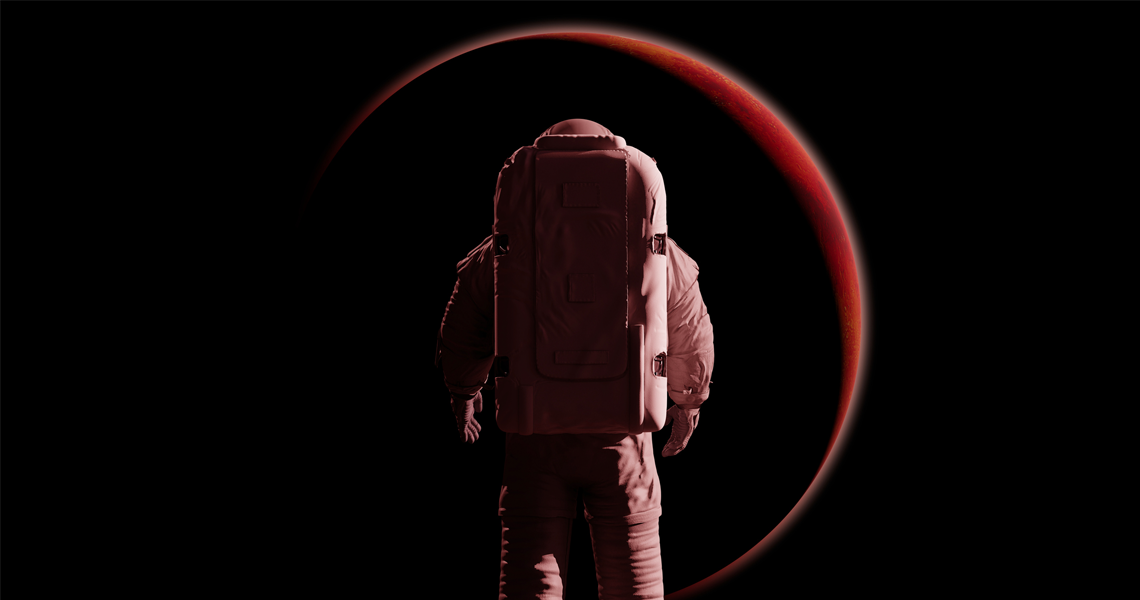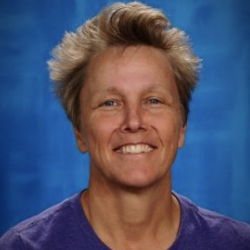
I was ready to tackle remote learning with PBL.
I had very little experience implementing “true” Project Based Learning, but had a four-day PBLWorks conference under my belt—the virtual PBL World in June 2020. In the fall I decided to do a PBL unit for my eighth grade Earth science students.
Space science is always a hit with my students, but there was no way I could teach it the way I had in the past in a traditional setting. But I was up for the challenge to try PBL because I knew that I needed to engage my students with a topic they were interested in.
I used the PBLWorks Project Library, which is a tremendous resource as I navigate remote learning. It allows me to adapt previously created units to fit my students' needs without starting from scratch. I found a PBL unit that was designed originally for grades 3-5, Journey to the Planet Mars, which I modified for 8th graders.
The project’s driving question is, “How can humans safely explore Mars?” Students learn about space exploration, conditions on Mars, and the scale of the universe to identify problems related to Mars exploration, then develop inventions to help solve those problems.
I added some worthwhile pieces that lengthened the original project.
The most notable changes were:
- Adding a section on the International Space Station, as a way for students to see how astronauts are currently living in space.
- Having students email an expert—from the resources provided in the project—to help them answer questions that they had about space travel and exploration.
- Focusing on engineering design standards to help students assess their understanding of that process.
- Teaching and assessing speaking and writing standards in order for students to practice stating claims and offering evidence to support those claims.
I knew I needed an expert on life on the International Space Station, so I headed to Twitter. From one tweet, I was able to connect with NASA Astronaut Anne McClain, who joined us on Zoom about two-thirds of the way through our unit. She spoke to the whole class and answered all the students’ questions about life in space, the space station, and space exploration.
We used several tech tools to make remote learning work.
Students went through several Nearpod lessons to learn and reinforce concepts. (btw, students have told me many times this school year that they enjoyed Nearpod because it made them “feel like they were in school.”)
The main tech tool I used throughout the project was Google Slides. I created a master slide show of the whole unit divided into milestones. As I finished planning a milestone, I would then go back and break each milestone down into a lesson for students.
To help promote safe discussions, I used breakout rooms in Zoom, allowing students to share their thoughts in a smaller group prior to a whole class discussion.
Students had the opportunity to further research a space invention of their choice with more depth in milestone 2. After they completed their research they created a design diagram either by drawing it with paper and pencil or using Jamboard to bring in a photo of the invention and use the tools within Jamboard to label the various parts of their invention.
Students practiced speaking and got feedback from peers about their research. They shared out multiple times to different groups in breakout rooms, which exposed them to the numerous inventions their peers had created. From that experience, students were then able to improve their invention presentations and create a Flipgrid video for me to watch and provide them feedback. Adding Flipgrid to this lesson was one of the best ideas I had because I was able to see and hear all of my students for the first time all quarter.
Due to time constraints, potential supply issues at students’ homes, and COVID restrictions, I gave students a choice of products.
They could either draw their final product in a detailed diagram or create a physical prototype. Final product teams were also formed through student choice, and they settled on a prototype they could all agree upon. For drawings, some students use paper and pencil, others found computer programs to create their prototypes, and one team used a 3D programming site to create their prototype.
As the end of the quarter neared, teams had an opportunity to practice sharing their final products in Zoom breakout rooms, receive feedback, improve their work. All teams then created a Google Slides presentation of their final prototypes to screen share as they presented to the whole class via Zoom.
Students were not graded along the way—I have a gradeless classroom, which helps make the learning authentic. Their depth of understanding was fostered through a weekly reflection process in which they revisited all they had learned during the week. Reflection and student choice in various deliverables gave students the opportunity to have a say in what they wanted to learn and helped to cultivate curiosity. Students self-assessed on their collaboration skills, engineering design, and speaking/listening and writing standards at the end of the unit using a Google Form. I also asked for feedback on the project.
Many students during this time have expressed not only a new love for science but also a passion for space science due to this project.
Students have continued to research their unanswered questions on their own after class and even after the quarter was over. I even have not one but two students who want to become astronauts!

